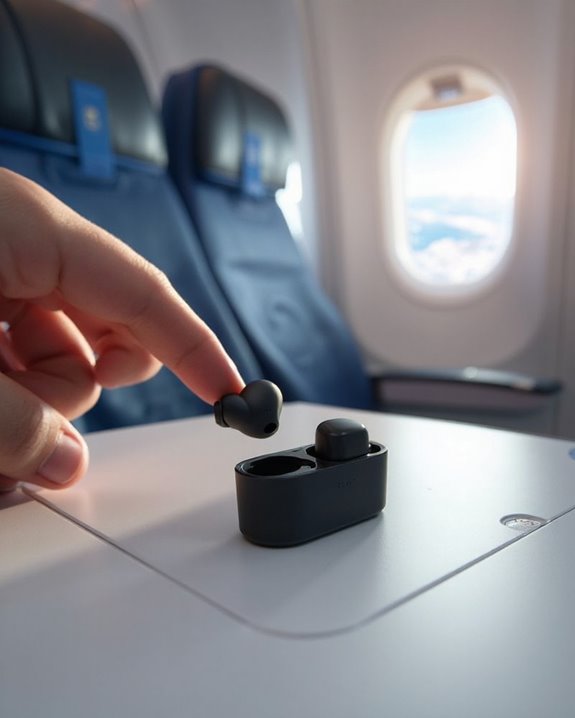James Crumbley likely wears headphones in court to accommodate potential hearing difficulties or to guarantee clear audio reception during proceedings. This standard protocol protects his Sixth Amendment right to participate meaningfully in his own defense. Courtrooms utilize specialized audio systems with noise cancellation capabilities to eliminate background distractions and enhance speech intelligibility. These accommodations balance the defendant’s right to comprehension with courtroom transparency requirements. Further examination reveals how assistive technologies maintain judicial fairness across various cases.
Key Takeaways
- James Crumbley may be wearing headphones in court for hearing assistance due to potential hearing impairment.
- Headphones could provide real-time translation services if English isn’t his primary language.
- Courts use headphones to fulfill ADA requirements for individuals with hearing difficulties.
- Wearing headphones helps defendants focus on proceedings by isolating dialogue from distracting ambient noise.
- Headphone use follows established court protocols and maintains both defendant privacy and public transparency.
The Purpose of Courtroom Headphones
Why do individuals like James Crumbley wear headphones during court proceedings? Headphones serve multiple critical functions in the courtroom setting. They provide essential access to Assistive Listening Systems (ALS), which transmit amplified, undistorted speech directly to the listener, reducing background noise and improving comprehension of critical testimony.
For participants with hearing difficulties, these devices guarantee equal access to proceedings, fulfilling ADA requirements for reasonable accommodations. Additionally, headphones offer Translation Support for non-native speakers requiring interpreter services, allowing them to follow proceedings in real time without disruption.
The equipment also promotes Focus Enhancement by isolating court dialogue from distracting ambient sounds. By delivering clear audio through infrared technology, headphones help prevent mistrials or delays caused by misunderstandings, thereby protecting due process rights and contributing to fair legal outcomes. Modern noise-cancelling headsets, such as those featuring AI noise cancellation, further enhance audio clarity by blocking out background distractions effectively.
Hearing Impairment Accommodations in Legal Proceedings
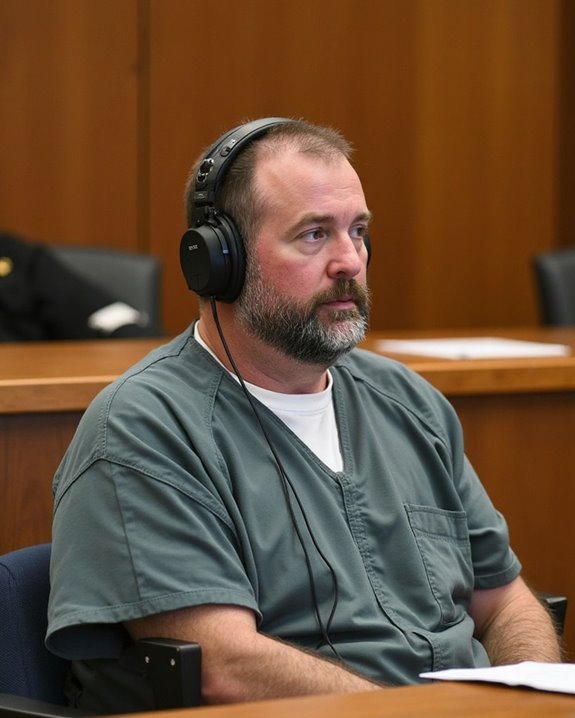
Headphones in courtrooms represent just one approach within a broader framework of accommodations for hearing-impaired individuals during legal proceedings. The Americans with Disabilities Act mandates that courts provide auxiliary aids such as assistive listening devices, qualified interpreters, and real-time captioning services to guarantee effective communication.
Implementation challenges often arise when coordinating appropriate accommodations on short notice, particularly for unexpected participants or witnesses. Courts must balance providing equal access while maintaining procedural efficiency.
Accommodation costs vary greatly based on the specific needs and duration of proceedings. While specialized equipment like hearing loop systems represent significant initial investments, they often prove cost-effective compared to repeated interpreter services. Federal funding programs exist to offset these expenses, though budget constraints occasionally limit ideal implementation in smaller jurisdictions.
Advancements in technology, including devices with active noise cancellation, further enhance hearing aid effectiveness in noisy environments like courtrooms.
Standard Protocol for Defendants With Auditory Needs
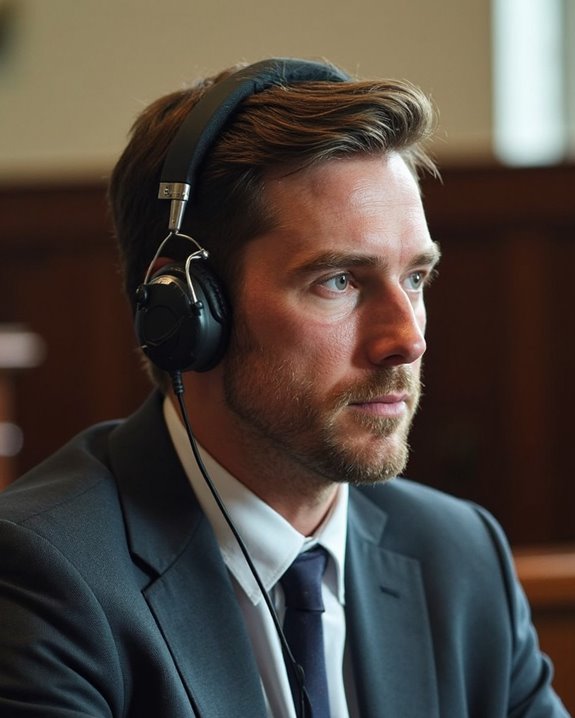
The courtroom’s accommodation of defendants with hearing impairments follows a set of established protocols, though these practices often vary between jurisdictions. Policy Evolution in this area has prioritized ensuring defendants can fully participate in their own proceedings, regardless of auditory limitations.
Judges maintain significant discretion in approving headphone use, typically basing decisions on documented medical needs and courtroom logistics. Enforcement Strategies include providing specialized equipment while maintaining proper courtroom decorum.
Technical considerations are paramount, as audio systems must deliver clear sound without disrupting proceedings. Courts typically provide:
- Wireless headphones connected to courtroom audio systems
- Volume control options for individual needs
- Configurations that permit attorney consultations
When implementing these accommodations, courts balance the defendant’s rights with maintaining appropriate courtroom etiquette and public access to proceedings. Modern systems increasingly incorporate active noise cancellation technology to enhance audio clarity for users in challenging environments.
Technical Aspects of Courtroom Audio Systems
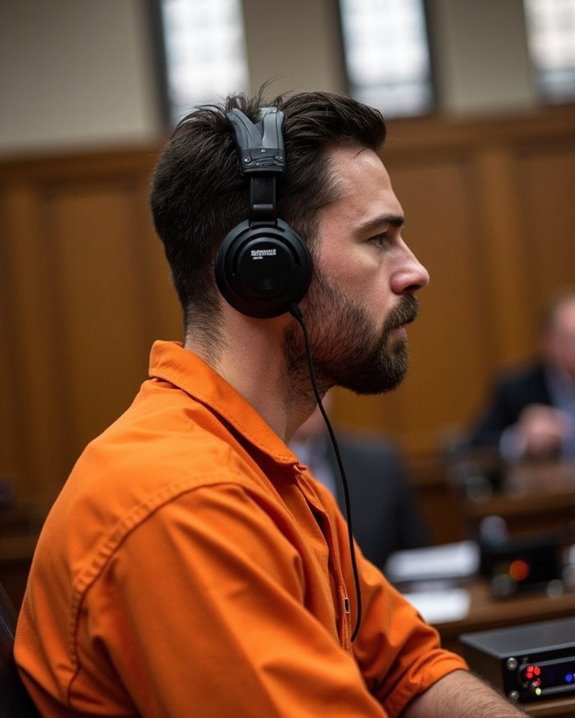
Modern courtroom audio systems form the backbone of effective judicial proceedings, particularly when accommodating defendants with special hearing requirements. These systems utilize sophisticated Audio Wiring infrastructure that connects high-sensitivity boundary microphones and ceiling-mounted speakers to guarantee clear communication throughout the courtroom.
Digital Signal Processing equipment serves as the technical foundation, eliminating unwanted echoes and background noise that could interfere with comprehension. Today’s courtrooms commonly employ technology like Biamp’s TesiraFORTÉ AVB VT, which integrates recording capabilities with assistive listening options for hearing-impaired individuals.
The technical configuration typically includes:
- Centralized control panels managed by the Courtroom Deputy
- Infrared or FM-based transmission systems for headphone users
- Multi-channel audio routing capabilities
- USB connectivity for device integration
Legal Rights to Clear Communication During Trial

Under the foundational principles of American jurisprudence, every defendant possesses the constitutional right to clear communication throughout trial proceedings. This entitlement, central to Defendant Rights, guarantees individuals can fully comprehend charges, evidence, and testimony presented against them.
The Sixth Amendment explicitly guarantees defendants access to legal counsel and the ability to participate meaningfully in their defense. Court personnel must facilitate this understanding through appropriate accommodations when necessary, such as translation services or assistive listening devices.
When communication barriers exist, courts are obligated to implement solutions that maintain Trial Integrity. These measures prevent potential grounds for appeal based on due process violations. The justice system’s fundamental fairness depends on guaranteeing defendants can adequately follow proceedings, communicate with counsel, and understand the nature of the legal process confronting them.
Comparing Headphone Use in High-Profile Cases
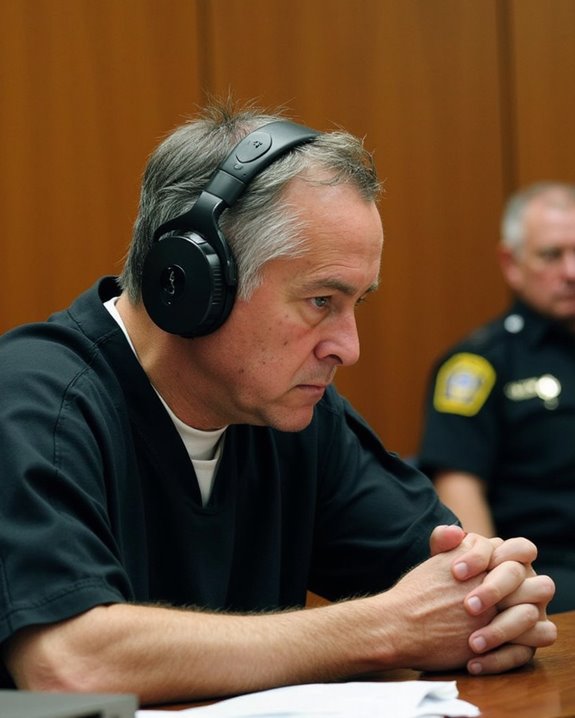
While constitutional protections guarantee clear communication during trials, specific accommodations like headphones appear with varying frequency across the American legal landscape. Technical considerations, including audio quality and minimal distraction, often determine implementation in courtrooms nationwide.
Historical examples reveal headphone use dates back decades, primarily serving defendants with hearing difficulties rather than as standard equipment. International variations exist as well; some European courts integrate more advanced audio systems for all participants, while American courts typically provide individual accommodations as needed.
The visibility of these devices in media coverage, particularly in cases like Crumbley’s, often heightens public interest. When headphones appear in high-profile trials, they frequently become discussion points in documentaries and news coverage, sometimes overshadowing their practical purpose of ensuring fair proceedings.
The Intersection of Medical Privacy and Courtroom Transparency

How courts navigate the delicate balance between medical privacy and public transparency creates complex challenges in high-profile cases like Crumbley’s. Courts must adhere to global privacy standards while fulfilling their obligation to conduct proceedings openly.
When defendants use headphones for hearing assistance, judicial ethics require protecting their medical information while maintaining public access to proceedings. This balancing act involves:
- Providing necessary accommodations without drawing undue attention
- Ensuring spectators understand the purpose without revealing confidential health details
- Following established protocols that respect both transparency and privacy rights
The presence of headphones in court represents a practical solution that upholds defendants’ dignity while satisfying the public’s right to observe justice in action. Courts typically minimize explanation unless necessary to prevent misconception or prejudice.
How Assistive Devices Impact Jury Perception
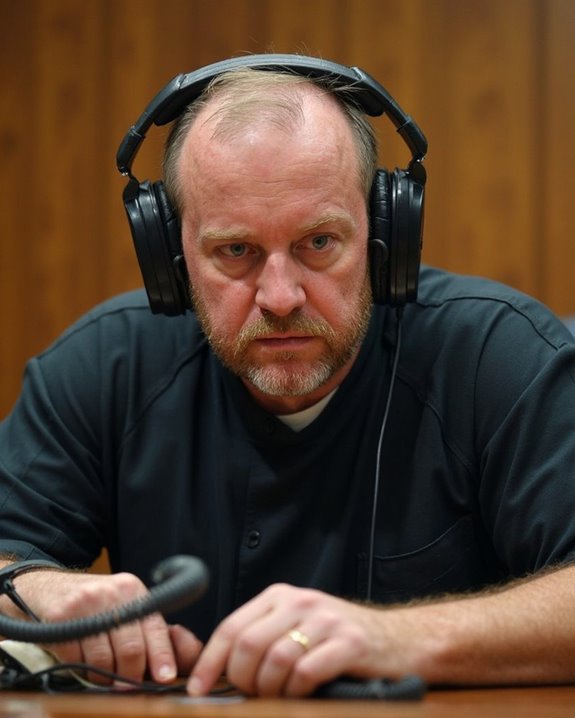
Assistive devices in courtrooms fundamentally reshape the dynamics of jury perception, often in ways that remain invisible to casual observers. Their Sensory Influence extends beyond mere accommodation, actively enhancing how information is processed and retained by jurors.
Visual aids and interactive displays create Cognitive Resonance with jurors, helping complex evidence become more accessible and memorable. Studies show that engaging multiple senses simultaneously improves information retention by up to 65%.
When properly implemented, assistive technologies like high-quality audio systems and digital evidence presentation tools maintain juror attention throughout lengthy proceedings. However, the integration of these tools must be carefully balanced—technological accommodations should enhance comprehension without creating distractions or biases in the courtroom environment.
Frequently Asked Questions
Did Crumbley Request the Headphones or Were They Court-Mandated?
Evidence suggests Crumbley’s headphones were court-facilitated rather than personally requested. No request evidence appears in records, while mandate origins trace to court accommodation procedures for his documented hearing difficulties, as confirmed by defense counsel.
Can Defendants Remove Headphones During Emotional Testimony?
Defendants can typically request to remove headphones during emotional testimony, subject to judicial approval. Courts evaluate such requests based on courtroom Emotional Protocols, potential Defendant Distraction, and the impact on fair trial proceedings.
How Are Headphone Conversations Monitored for Security Concerns?
Headphone conversations utilize dedicated audio monitoring systems with encryption and surveillance integration. Court personnel employ privacy techniques like regular security audits and secure transmission protocols to prevent unauthorized access while maintaining necessary oversight of defendants.
Are Family Members Allowed Similar Hearing Accommodations?
Family members with disabilities, relatives with hearing impairments, and loved ones with special needs are all eligible for accommodations in court settings. Courts provide reasonable arrangements for family accommodations, including assistive listening devices, upon request.
Does Headphone Use Affect a Defendant’s Appeal Options?
Standard headphone use for hearing accommodation typically does not affect appeal options. Appeal strategies remain unchanged unless rights evaluation shows a defendant was denied due process through improper functioning of assistive technology.


